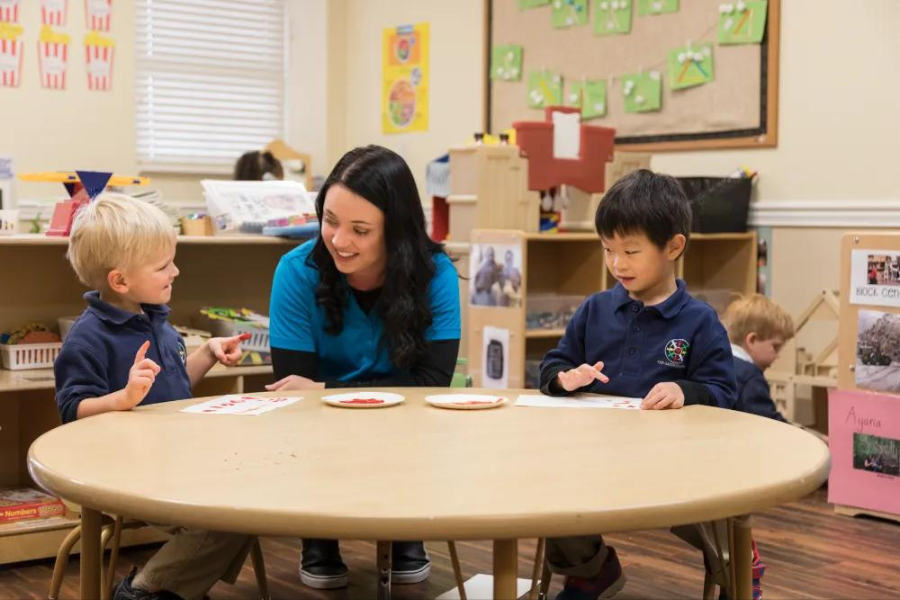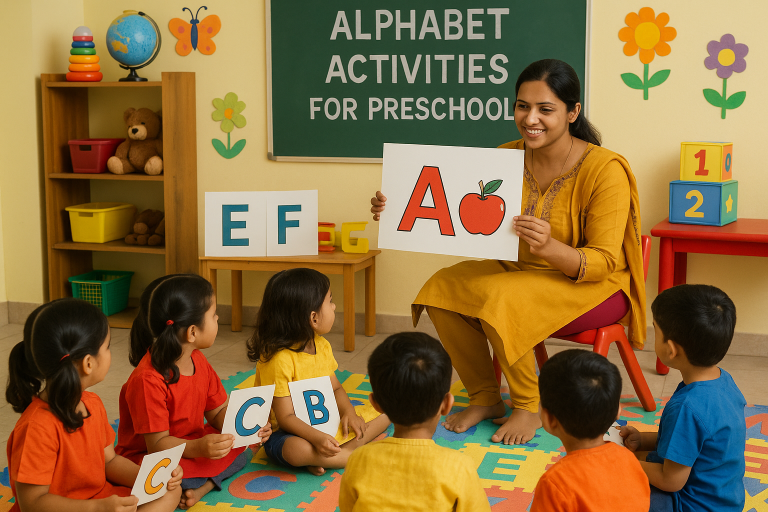 Teaching phonics to young students opens a world of reading possibilities, making it a necessary skill for teachers and parents alike. Knowing “How to Teach Phonics” successfully includes introducing children to letter sounds, blending methods, and identifying patterns that build a base for reading. When you know “How to Teach Phonics” systematically, you provide children with the tools to read freely, decode unaware words, and increase comprehension skills. Learning “How to Teach Phonics” can be upfront with the right tactic, turning reading into an enjoyable and manageable journey for young children.
Teaching phonics to young students opens a world of reading possibilities, making it a necessary skill for teachers and parents alike. Knowing “How to Teach Phonics” successfully includes introducing children to letter sounds, blending methods, and identifying patterns that build a base for reading. When you know “How to Teach Phonics” systematically, you provide children with the tools to read freely, decode unaware words, and increase comprehension skills. Learning “How to Teach Phonics” can be upfront with the right tactic, turning reading into an enjoyable and manageable journey for young children.
Steps to Teach Phonics
Teaching phonics needs an organized approach, letting young students to slowly build their capabilities in reading. Succeeding a clear series of steps can make phonics learning more effective and pleasant. Here are the essential “Steps to Teach Phonics,” along with examples to illustrate each stage. Understanding “How to Teach Phonics” through these steps provides children with a solid foundation for fluent reading.
Steps to Teach Phonics
Step 1: Teach the Common Letter Sounds
Start with the basics by teaching individual letter sounds, putting efforts on common consonants and short vowel sounds. For example, introduce the sound of “a” as in “apple,” “b” as in “bat,” and so on. To identify sounds in words around them motivate kids.
Step 2: Teach Blending and Segmenting Simple 2 and 3 Letter Words
Teach them to blend and segment words, once kids know individual sounds. To form words like “cat” (c-a-t), while segmenting breaks down the word into individual sounds blend combine sounds. Begin with simple CVC words like “cat,” “dog,” or “bat.”
Step 3: Teach the Digraph Sounds
Where two letters come together to make a single sound, such as “ch,” “sh,” and “th”, introduce digraphs. Use words like “chip,” “shop,” and “path” to show these new sounds. In “How to Teach Phonics” for decoding more words this is necessary step.
Step 4: Blending and Segmenting of Words Using Simple Digraphs
Practice blending and segmenting with words that contain digraphs. For instance, with “fish” (f-i-sh) or “chat” (ch-a-t), guide children to recognize that some letters form a unique sound together.
Step 5: Teach Alternative Sounds for Letter Sounds
It’s important to teach alternative sounds s some letters have more than one sound. For example, in “circle” “c” is deliver as “s” and in “giraffe” “g” is deliver as “j.” By learning these alternatives, children can better decode various words.
Step 6: Teach Tricky Words / Sight Words
“The,” “was,” and “you” are some of the tricky words or sight words that don’t follow standard phonics rule. As they appear frequently in texts, and they are crucial for reading fluency teach these by heart.
Step 7: Introduction of Phonics Rules
Introduce simple phonics rules, such as the silent “e” rule, where “hop” becomes “hope.” Another common rule is that in “happy” y” at the end of a word often sounds like “e”. These rules help children decode more complex words.
Step 8: Blending and Segmenting More Complex Words
With these foundational skills, children can start blending and segmenting more complex words with multiple syllables, like “sunshine” (sun-shine) or “basket” (bas-ket). Breaking down complex words builds confidence in reading.
Step 9: Teach Digraphs and Trigraphs
At this stage, introduce additional digraphs and trigraphs (three-letter combinations), such as “igh” in “light” or “air” in “chair.” Explain how certain combinations create specific sounds, which expands children’s vocabulary.
Step 10: Reading Simple Sentences to Paragraphs
Finally, move towards reading short sentences and paragraphs. Motivate kids to use their phonics abilities to sound out each word, blending them into sentences As their reading capabilities develop start with simple sentences like “The cat is on the mat,” going to short paragraphs.
Each of these “Steps to Teach Phonics” slowly develops kid’s reading capabilities, creating a strong base for language development. Following these steps effectively demonstrates “How to Teach Phonics” with confidence and clarity, empowering children to become independent readers.
Best Phonics Classes
Finding the Best Phonics Classes can be a game-changer in early childhood education, especially when choosing one that combines structure, creativity, and proven teaching techniques. Divineland Pre-Primary School (DPPS) stands out as a top choice, offering phonics classes that make learning both effective and enjoyable for young minds.
Here’s why DPPS phonics class is recognized as one of the Best Phonics Classes:
Structured Phonics Curriculum
DPPS has a precisely designed curriculum that breaks down How to Teach Phonics in an organized and involving way. Children are introduced to sounds, letter identification, blending, and decoding abilities in a way that feels natural and worthwhile.
Interactive Learning
With activities that includes songs, games, and visual aids, DPPS classes make phonics interactive with activities that includes songs, games and visual aids, helping children learn concepts faster and remember them longer. This approach ensures that kids not only learn How to Teach Phonics elements but also enjoy each session.
Qualified Instructors
With experience in early childhood education the teaching staff at DPPS are experts in How to Teach Phonics. They understand young students’ unique wants, providing patience, motivation, and personalized support to each child.
Small Class Sizes
DPPS maintains small class sizes to ensure individual attention, letting teachers to adjust their teaching based on each child’s progress, which is critical for effective phonics learning.
Progressive Techniques
DPPS uses a blend of traditional and modern phonics techniques, emphasizing how children can build on their skills progressively. This gradual approach is a hallmark of the Best Phonics Classes.
Choosing DPPS means accessing a learning environment where phonics is more than just instruction; it’s a journey that builds confidence, literacy, and a love for reading, making it one of the Best Phonics Classes for young learners.

Phonics Course for Teachers
A “Phonics Course for Teachers” provides teachers an organized way to build young students reading capabilities through sound identification, blending, and decoding methods. Vidhyanidhi Education Society’s Phonics Teacher Training Course is made for teachers aiming to develop expertise in phonics instruction, preparing them with practical methods to increase knowledge results in children.
Here’s what makes this course a perfect choice for teachers:
Key Highlights of the Phonics Course for Teachers at Vidhyanidhi Education Society (Govt. Regd.)
- Comprehensive Understanding of Phonics Fundamentals: Get knowledge of necessary elements like the 42 sounds, blending, segmenting, and identifying tricky words.
- Hands-on Training: To teach letter formation, blending sounds, and knowing phonics rules learn successful methods.
- Phonics Rules and Applications: To help students with word formation, spelling, and pronunciation understand the needed phonics rules.
- Teaching Strategies and Classroom Techniques: The course provides tactics tailored for engaging young students, making phonics fun and interactive.
- Focus on “How to Teach Phonics”: Throughout the course, there is an importance on “How to Teach Phonics,” making sure that teachers can translate these skills directly to the classroom.
This “Phonics Course for Teachers” covers every feature needed for effective phonics instruction, making it an experienced program for those dedicated to increasing early knowledge in their classrooms. Vidhyanidhi Education Society’s approach is especially designed for teachers who want to bring impactful, evidence-based phonics learning to young children.
Give your child the gift of reading success at Divineland Pre Primary School!
For more details of Divineland’s Phonics Classes, Call or Whatsapp on +918591021373/ +919082778593
For downloading the brochure of Divineland’s Phonics Classes, Click Here!
FAQs
Is there any Professional Phonics Classes in Gorai Charkop?
Yes, Divineland Pre Primary School offers professional phonics classes in Gorai and Charkop
How to Make our Child Confident at Reading , Writing and Spellings ?
To increase your child's confidence in reading, writing, and spelling, enrol them in Divineland's Phonics Teacher Training Course. Contact: +91 9082778593 / +91 8591021373.
What is the Age Limit for Phonics Classes?
Phonics classes are best introduced to children starting from 3.5 years of age.


